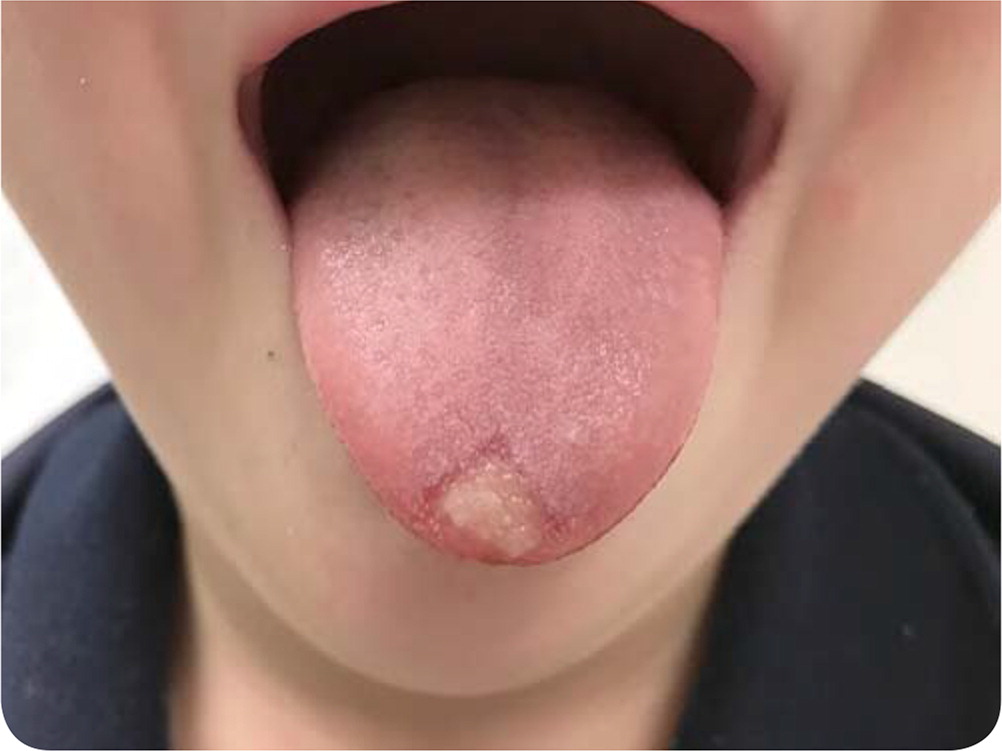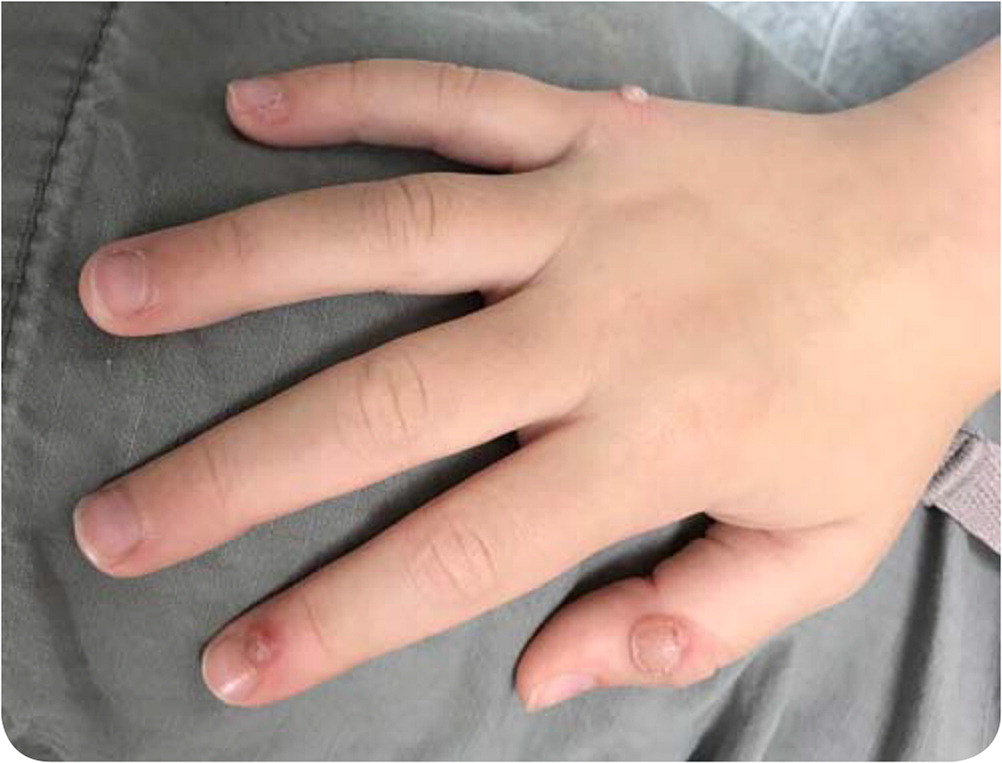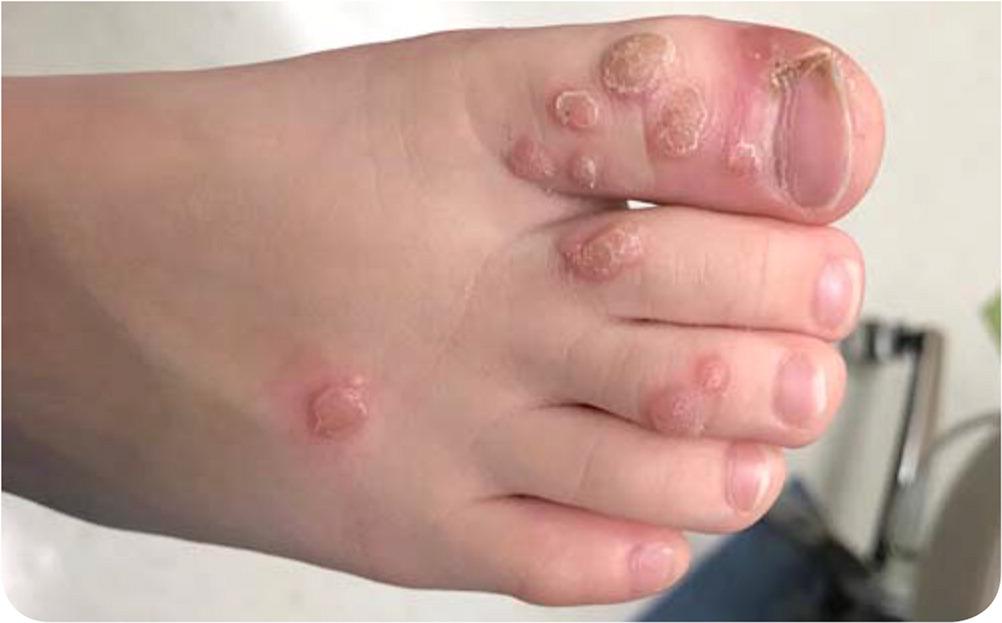
Am Fam Physician. 2019;99(6):385-386
Author disclosure: No relevant financial affiliations.
A healthy six-year-old boy presented with a painful ulcer on his tongue. Earlier in the day, he had received treatment at a dermatology clinic for foot and hand lesions.



Question
Based on the patient's history and physical examination findings, which in-office dermatologic treatment did he most likely receive?
A. Cantharidin.
B. Cryotherapy.
C. Intralesional Candida.
D. Pulsed dye laser.
E. Salicylic acid 17%.
Discussion
The answer is A: cantharidin. This patient was being treated with cantharidin for warts. Cantharidin is a substance secreted by the blister beetle (Epicauta lamniscata). When applied to warts, this vesicant causes painless blistering beneath the wart within 24 hours. Cantharidin can be used as an alternative to cryotherapy with liquid nitrogen in young children because it is less painful and better tolerated. As the skin at the site of the wart begins to blister, the blood supply is cut off. The lesion then crusts over, and the crusted blister typically falls off after several days. Parents are instructed to wash off the cantharidin two to four hours after application to prevent excessive blistering.1
Despite the use of bandages on his hands, based on the lesion and the timeline, it is likely that the child's tongue was exposed to cantharidin from the child placing his fingers in his mouth. His oral lesion resolved with triamcinolone paste (Oralone), and there were no lasting complications. Although cantharidin is effective for wart treatment and generally safe at all ages, one of the multiple other treatment options for warts should be considered in young children who are prone to putting their fingers in their mouths.
Cryotherapy is an in-office treatment that uses liquid nitrogen to freeze the skin. Although it is effective in wart treatment, cryotherapy is uncomfortable and often not tolerated by young children. It may cause blistering, but this typically occurs immediately, as opposed to the delayed onset with cantharidin.
Intralesional Candida is used to induce a localized immune response. It is typically well-tolerated, although it may cause pruritus, pain, and a burning sensation. It is not known to cause blistering. There have been two reported cases of digital swelling and purple discoloration when injected into a subungual wart.2,3
Pulsed dye laser treatment is an in-office procedure that aims to selectively destroy the dilated capillaries of a wart. It is well-tolerated but requires expensive equipment. Adverse effects include pain during treatment and temporary redness and swelling.
Salicylic acid is a keratolytic agent that is available over the counter for at-home use by patients. It is well-tolerated and inexpensive, and it has minimal adverse effects. Although it can cause minor skin irritation and hypo- or hyperpigmentation, blistering and ulceration are not known adverse effects.
The opinions and assertions contained herein are the private views of the authors and are not to be construed as official or as reflecting the views of the U.S. Navy Medical Department or the U.S. Navy at large.
